With devices and technology being an inseparable part of our lives, is there tangible value in picking up an analog medium? As interactive Art Director, Designer and Developer Jordan Sowers discovered, there is and then some. Fascinated by the designer and painter who created the MAEKAN fabric, we turned to Jordan for more insight on his painting process, how it has introduced mindfulness into his life, and furthermore, how the art has influenced his design and his approach to creating.
Desktops, laptops, tablets, smartphones and smartwatches. These have become modern extensions of our body.
We use these devices to communicate, consume and create in the digital space and our day-to-day now revolves around them. We might also use several devices simultaneously, perhaps without even realizing it.
A 2015 study from Google concluded smartphones are the best way to reach adults aged 18 to 34, further cementing their purpose as the primary way of delivering content. These results might be verified by a quick look around. It’s common to see people stream music and videos, scroll through their Instagram feed, and use Facetime on their phone — all while they’re sitting in front of a computer.
Suffice it to say, we’ve reached a point where technology follows us wherever we go. It’s crept into all corners of our lives. Even to the point that some of us at MAEKAN felt it was necessary to introduce a “no smartphones In the restroom” policy. Why?
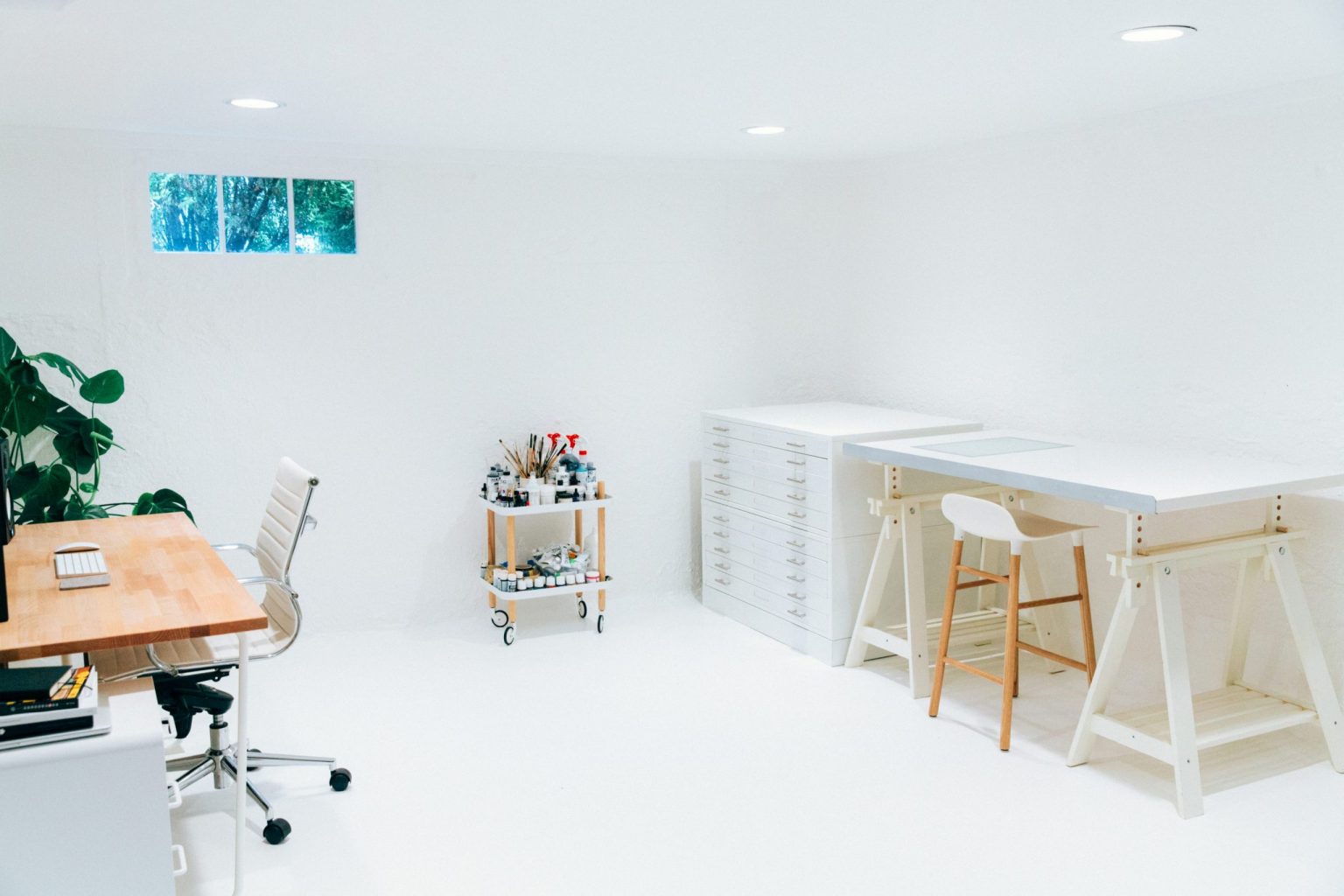
Jordan’s all-white basement-turned-studio. He left it bare to help clear his mind of distractions.
Because in the digital era, quality time with our thoughts — even five or ten minutes of it — has become a luxury. The reason for this scarcity can be attributed to hundreds, sometimes thousands of messages that we get every day, from emails to pop-up ads to notifications. The mass of micro-distractions pulls us in all directions.
For tech-savvy individuals especially, it’s become second nature to multitask digitally. It’s effortless. And it’s virtually impossible to go back. Pushing against this relatively recent development is certainly possible, but requires an interesting, almost dated way of looking at our world through analog goggles.
This perspective begs the following: what can we learn from the analog world? And how can we apply it in a digital context?
As our friend Jordan Sowers is bout to highlight, the analog world has a lot to offer. All we need to do is pay more attention to it, set time aside to engage with it before we lose touch with it.

Jordan’s analog tools.

A range of paint, brushes and tools that Jordan stores in a rack against the wall of his studio.
“And what you have to do is just come back later and paint over it and maybe see something totally unexpected and it’s even greater than you want it to be.”
Jordan is an Interactive Art Director, Designer and Developer at Instrument — a digital creative agency out of Portland, Oregon. Like many of us, all his creative tools are in one place: His computer. For him, and for many, this is where design has always existed. It’s what he knows, what he’s comfortable with, and what feels most integrated as a material to him.
Yet, he’s always been aware of the digital realm’s limitations. There are no rules or restrictions that often bind you when it comes to designing for the web, while the analog world can be serendipitous, warm and most importantly, human.
He recalls how his process and role as a designer was for so long, rigidly set by rules such as those pertaining to UX or business problems. This was contrasted by the freedom to explore through painting, something he’s rekindled in his digital workflow.
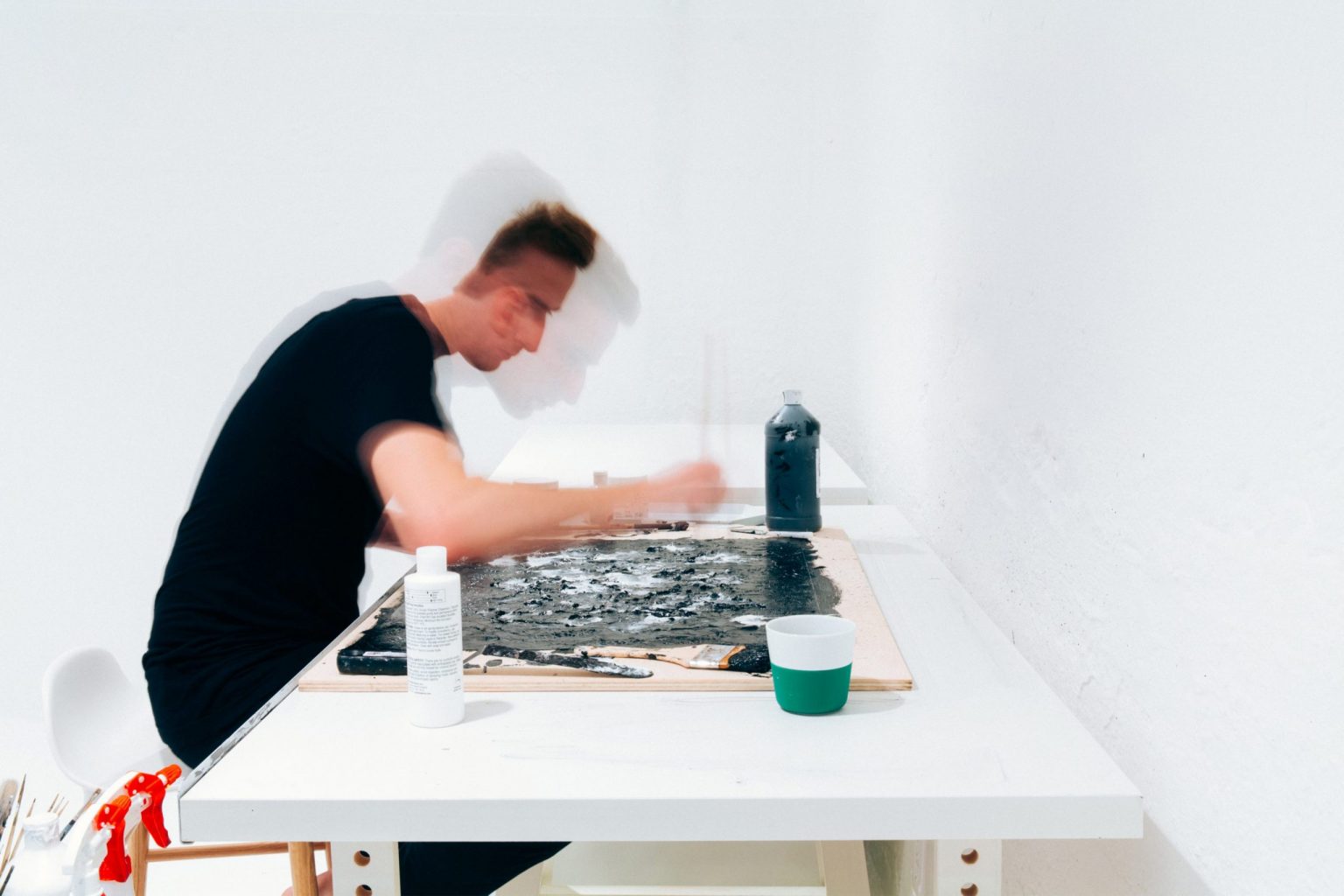
Jordan explores the world of abstract painting.
“Making mistakes and painting is this thing where as you’re painting, what you realize is that there’s this life of its own,” he explains. “You have to take moments to pause and to wait for a little and see what it does.”
This enforced patience would carry over to his designing as it encouraged him to step back, put the rules and business considerations aside, and create something true before reflecting on the result.
It could be said that abstract painting is the most helpful in this regard. Inspired by his favorite record sleeves, posters and art, Jordan was drawn to abstract art when he first picked up a paint brush. What stands out to him is the fact that abstract art isn’t necessarily referential to reality.
“There’s definitely surprises that you come up with because if you’re not thinking about problems. You’re literally just making art for a brand and then that could ultimately kind of guide you to wrap solutions around it and make something that you like.”
Another aspect of painting that has enlightened Jordan is its relative permanence compared to the digital canvas. It doesn’t allow you to constantly — and often unconsciously — hit the “undo” keys and correct all of the minute mistakes, perceived or real.
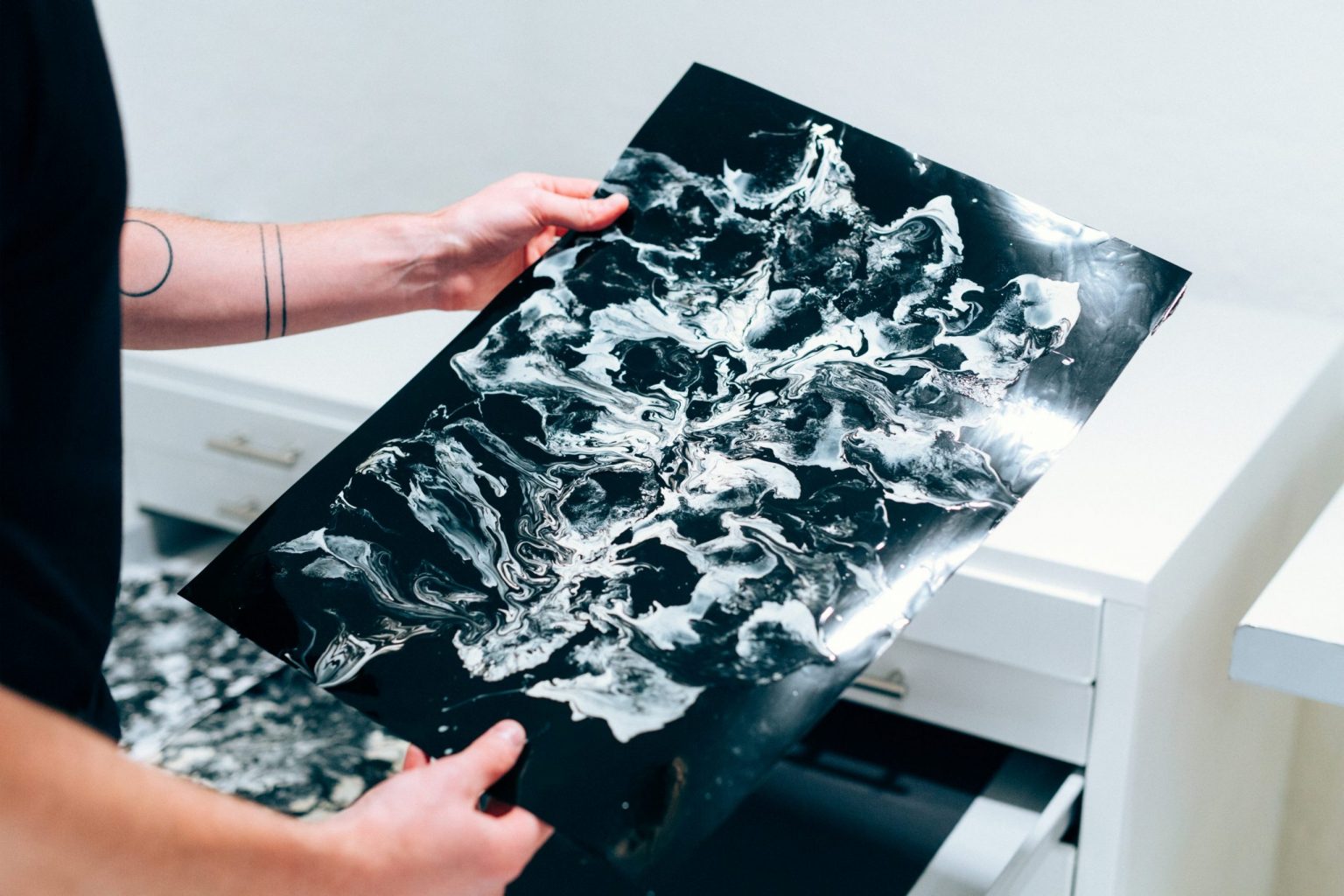
A paint study.
But for all the possible benefits creating in an analog medium holds for a digital one, the greatest is probably perspective. It’s not such much about technical skill as it is a way of looking at what you create and how to tackle the problems in front of you. Technology will certainly continue to try its best to mimic and replace certain aspects of humanity, especially our imperfection; technology is meant to be fail-proof and perfect.
Humans, through their limited calculative power and emotions, see life’s situations beyond just 0’s and 1’s. There is beauty in the mistakes we make and the subsequent learnings that come with them, but when you’re designing in a tech space, sometimes you lose touch of what it means to embrace imperfection and to be human.
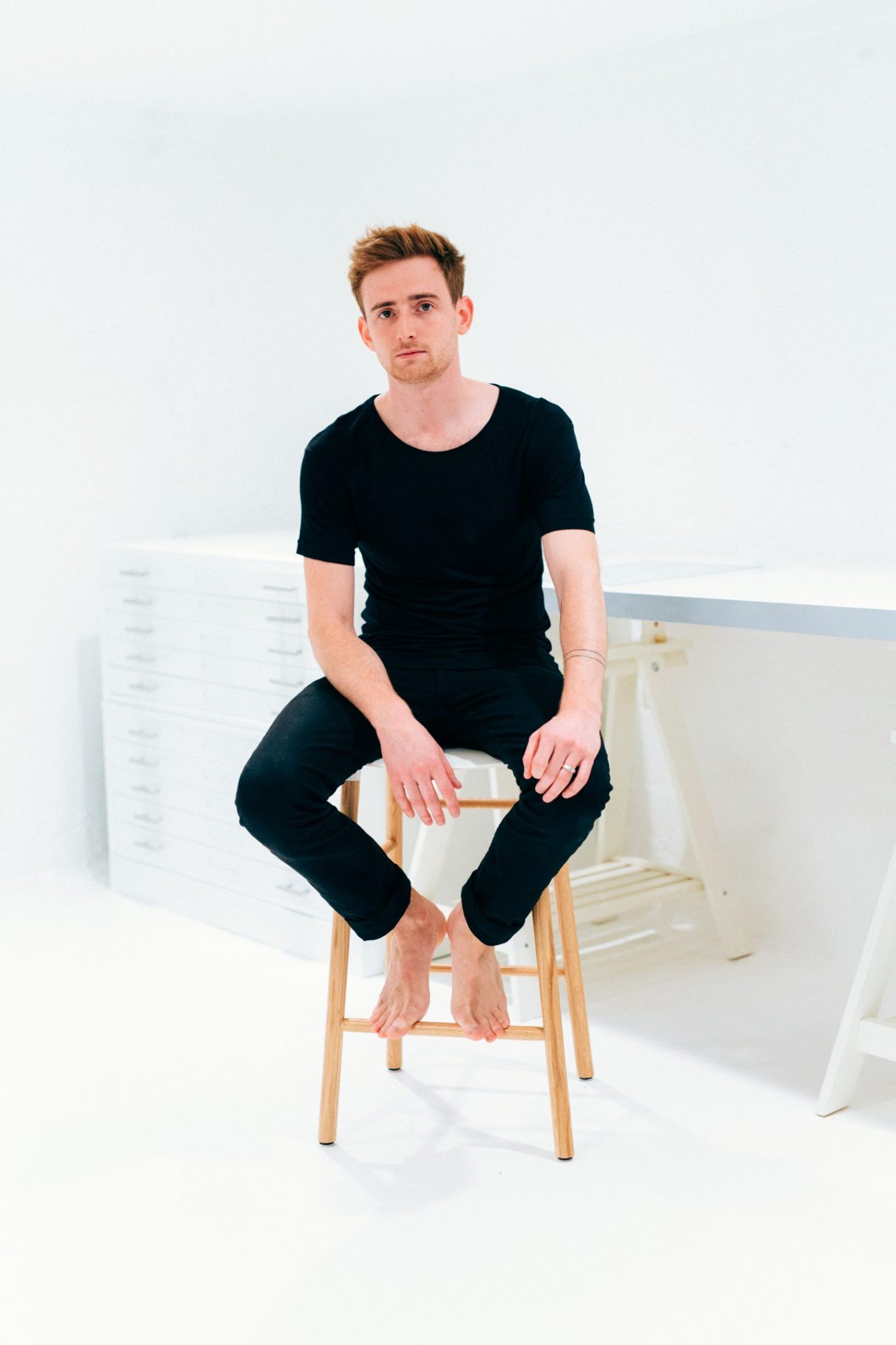
A portrait of Jordan Sowers.
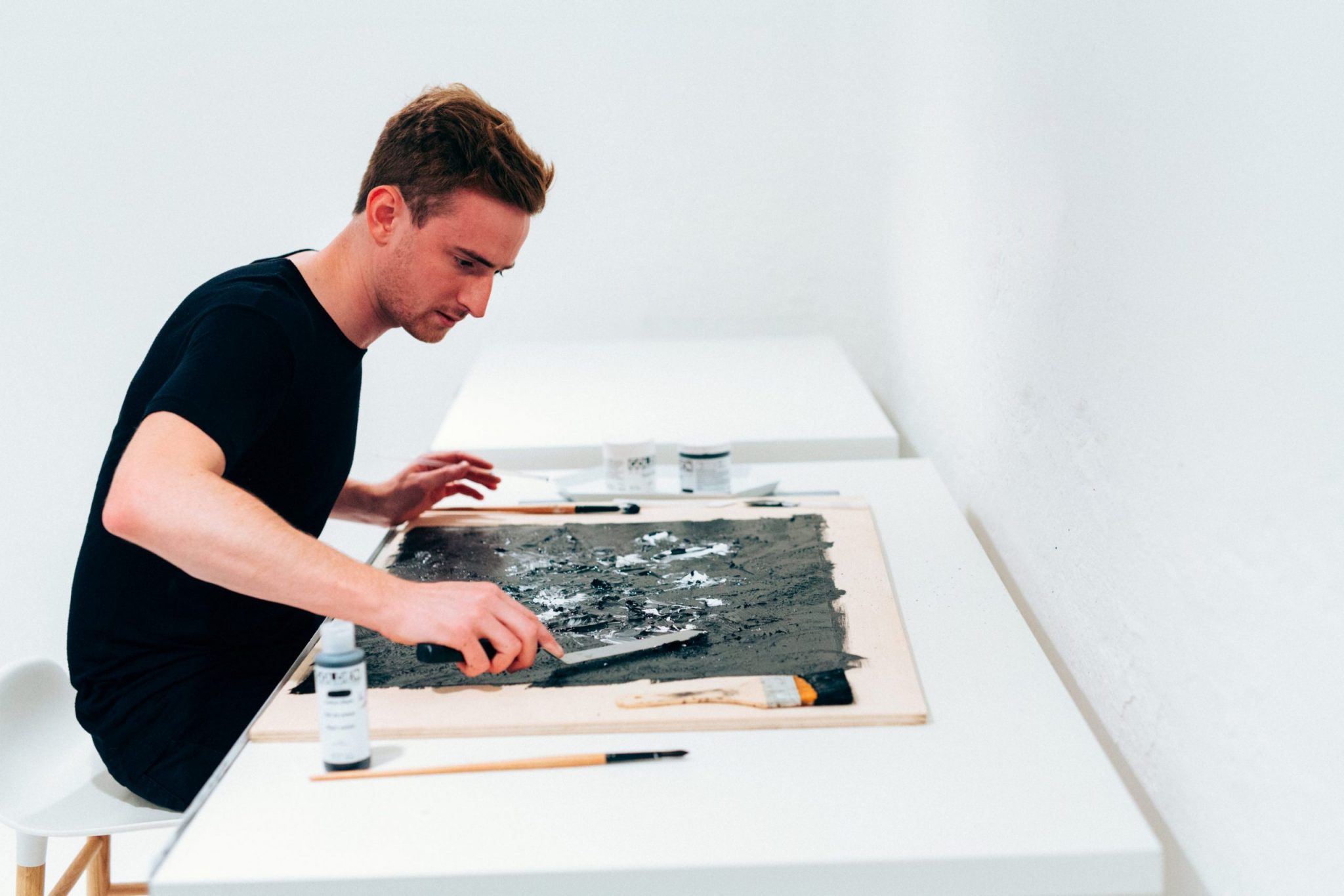
Jordan experiments with different tools and techniques.
For Jordan, he’s learned to approach that imperfection with a degree of forgiveness: “There’s these small mistakes that you just kind of have to welcome and bring in and kind of accept them and move along,” he says. “And what you have to do is just come back later and paint over it and maybe see something totally unexpected and it’s even greater than you want it to be.”
The one-person Jordan has to thank for this sense of enlightenment and new-found perspective is his mother-in-law, Lis, who’s also a painter. Every Christmas, Jordan and his wife travel south to Ashland, Oregon to visit his in-laws. When he’s down there, he and Lis often dive into conversation about art, painting and various techniques that she uses. It started out as all talk, until one year when they spent an entire afternoon in her studio.
It was there that he was guided to put down a piece of paper, to relax and feel the brush touching the paper. Simple as it was, it was creatively at odds with his design process of gathering references of other design solutions to a given problem, combining them and emerging with a new finished product. “That experience alone created this piece that I still haven’t been able to make something better. It’s still to this day the best piece of it.”
Even now, Jordan still goes to Lis for advice and with her help, he’s been able to open up his mind to a completely different way of thinking about design through painting. The more fluid rhythm and improvisation involved with painting has allowed him to loosen up his process and embrace spontaneity.
Aside from allowing oneself to forgive minor flaws and keep moving forward toward the bigger picture, being present with the work in front of you has the added benefit of allowing you to question your methods. Are they really the best methods, or are they those you employ merely out of comfort?

Tools that offer up endless possibilities, unlike their digital counterparts.
“I think if you step back from that and do something from the heart or from what you’re feeling in that moment or just a simple idea, that’s the way you should approach something when you create.”
“It shouldn’t be that you’re checking off these boxes like we typically do in the agency and interactive world,” he suggests.
Jordan was now striving to approach his creative work without baggage.
“You just bring yourself,” whereas in the past he was constantly reading books about design on how to better solve problems or how to see them from the viewpoint of some of his favorite designers.
Although he doesn’t actively meditate a lot, he admits he does to settle his mind or selectively reflect on his previous experiences. But a major part of being able to accomplish a state of mindfulness involves simply removing distraction by keeping a clean workspace, a cue he took from Lis.
“I painted my studio completely white and made it super stark. Nothing on the walls.” He admits he can’t measure the difference having a clean white space makes on his work, but he’s feels it builds consistency. “I really love that idea of trying to make your space better around you to just clear out these distractions and really put yourself in a state of solitude and try to come up with really your best work in that scenario.”
While painting and arguably other “slower” arts can certainly bear fruit in the form of hard skills that can inform other disciplines, it can be argued that one of the greatest benefits of Jordan’s relatively unregimented approach to painting is its simple therapeutic value.
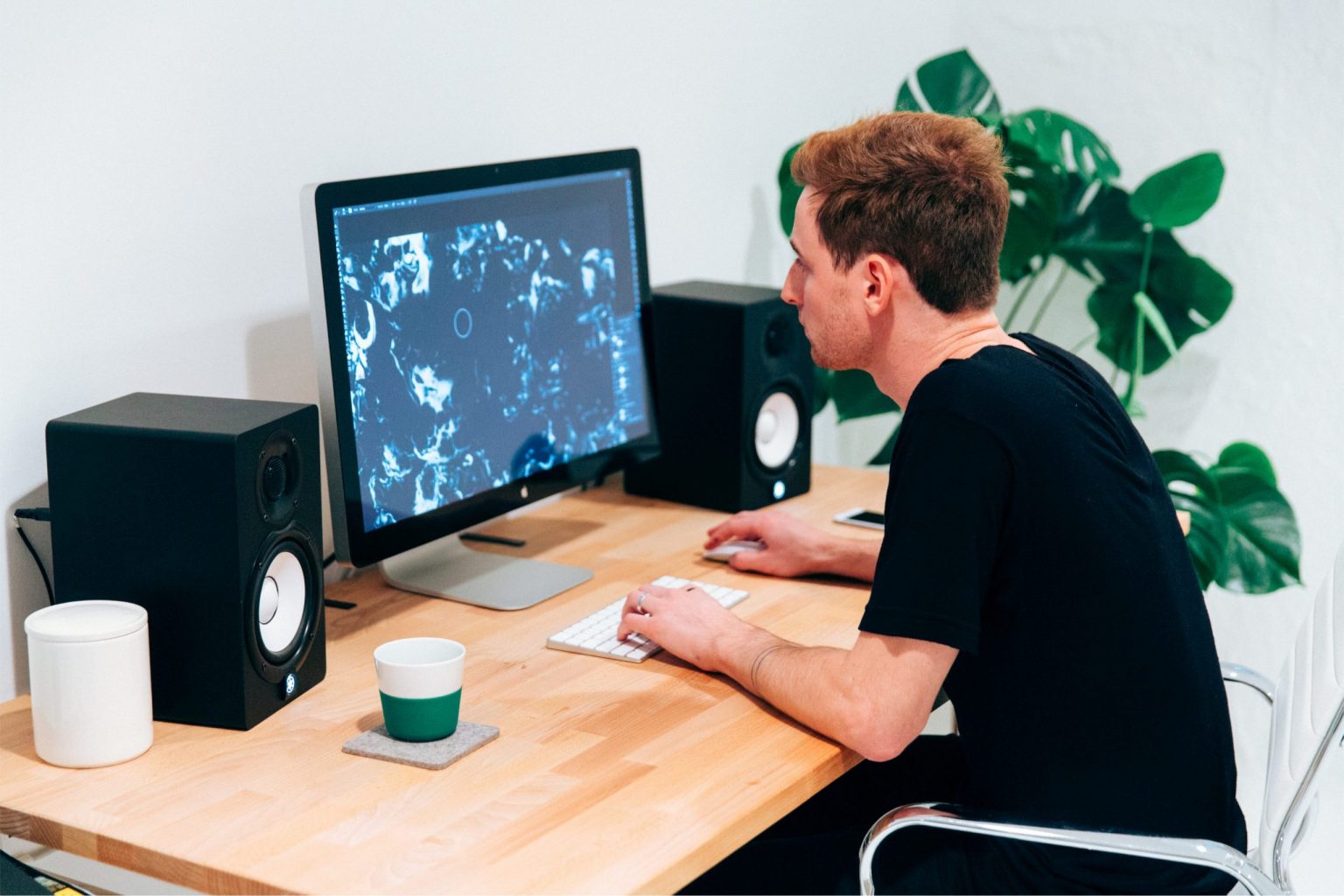
Jordan combines his expertise with a new-found creative outlet.
Years of experience in a given creative discipline mean that you will be creating in that discipline to the corresponding standard, and it’s impossible to “undo” that level of expertise. Yet, when you allow yourself explore a related or even completely unrelated discipline, there’s comparatively less self-judgment and the freedom to be a beginner again.
“For me, it never feels like work,” he says of painting. “And for some reason, my wife was like kind enough to let me take the basement and I took that as a space as a studio space where I’ll go down there and just like make something without any attachment.”
Back at Instrument’s headquarters in Portland, Oregon, Jordan’s design process is starting to have the same feel as his workflow in painting. Granted, mistakes will take more time to fix when you’re painting, so it’s about adapting to them and continuing to create.
But as his journey as proven, there is always a little more time to step back, reflect and let the brush do the work. And as his creations would prove, the wait is always worth it.





























